Sapphire’s Radeon HD 5850 Toxic Edition: Our First Fully-Custom 5850
by Ryan Smith on February 18, 2010 10:00 PM EST- Posted in
- GPUs
Power, Temperature, & Noise
On the one hand, by overclocking this card Sapphire has ultimately increased the power draw of the card and the amount of heat it will be generating. On the other hand with the Vapor-X cooler, they’re better equipped to siphon out that heat, and to do so without making much in the way of additional noise. So let’s see how things pan out.
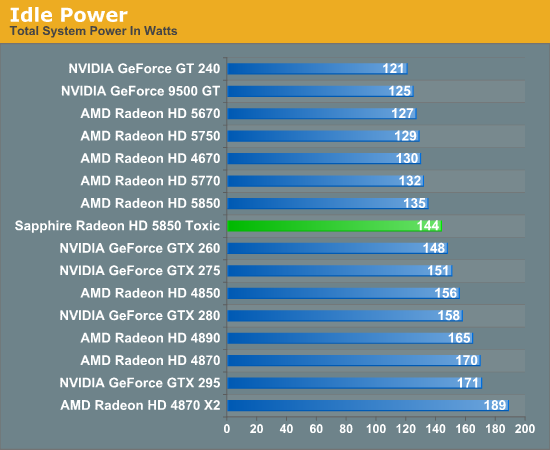
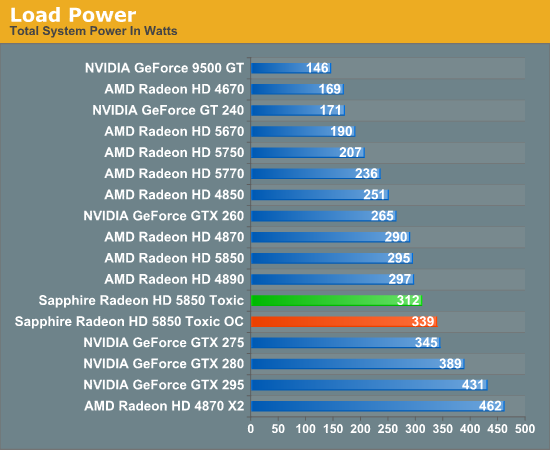
Right off the bat, the Toxic is at a disadvantage for power usage as we expected. At idle it operates at the same voltages and clocks as a reference 5850, so our 9W difference ultimately comes down to board differences; remember, the Toxic has a number of additional components compared to the reference card, particularly capacitors. Under load the difference is 17W, due to a combination of components and clock speeds. This is ultimately in-line with where you’d expect it to be based on the higher clock speeds.
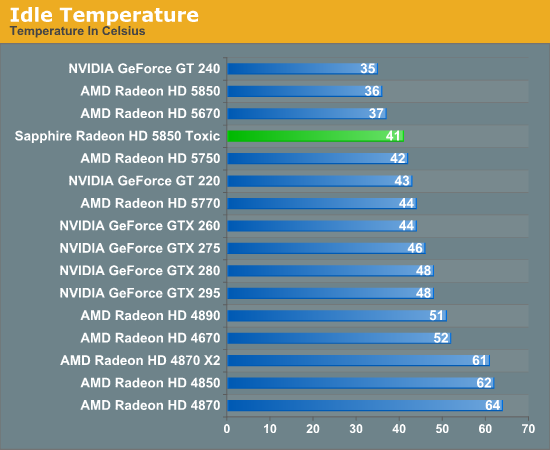
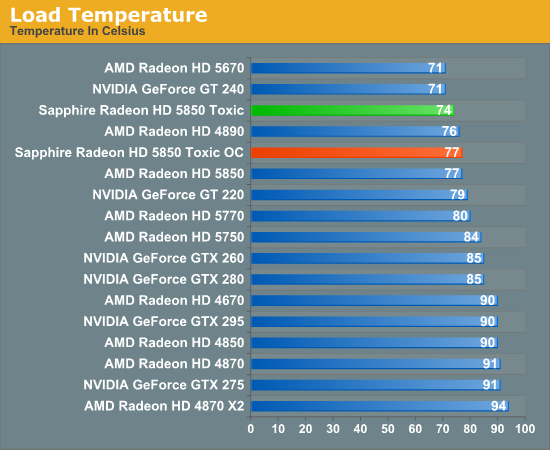
Moving to temperature, we can see the difference the Vapor-X cooler makes. The 5850 was always a particularly cool card, and surprisingly the Toxic does worse here. We’re measuring the temperature of the GPU, so any extra heat produced by the Toxic’s component selection shouldn’t be factoring in. The difference likely comes down to the coolers – a shrouded blower that fully exhausts hot air looks to be a more efficient option under these circumstances.
It’s under load where the Vapor-X cooler on the Toxic shines. Even though the card is overclocked and drawing an additional 17W, it still bests the reference cooler by 3C. It’s not a massive amount, but then again it’s only 3C warmer than even the 5670.
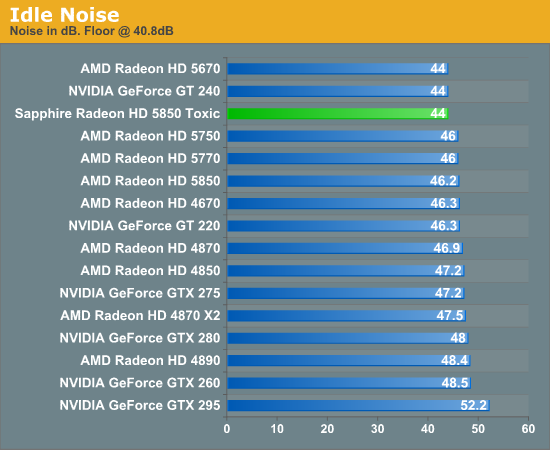
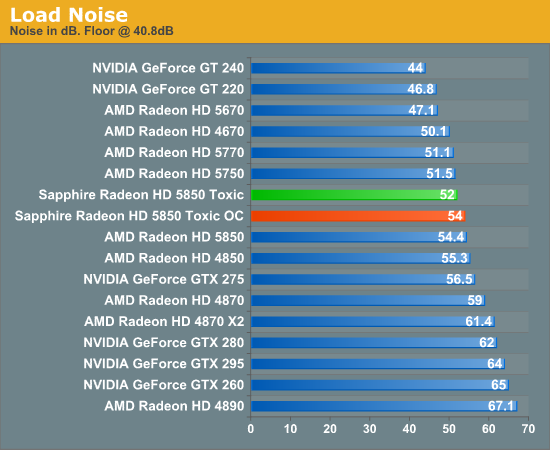
So the reference 5850 cooler may be a bit better at keeping temperatures down at idle, but it’s not the quietest option. Here the Toxic can do 2dB quieter. It’s a similar story under load, where it’s 2.4dB quieter than the reference cooler, and once again take in to consideration the fact that the Toxic is dispersing 17W of additional heat in the process.
As for our fully overclocked Toxic, the 895MHz/1175MHz clocks push power consumption up by another 27W to 339W under load. Even with the now 44W difference between it and the reference 5850, the noise generated by the Toxic and the GPU temperatures are in a dead-heat with the much slower reference 5850. There’s no question that the Toxic’s Vapor-X cooler is a superior cooler, and this leaves us wondering just how much more it can take if we could overvolt the GPU.










71 Comments
View All Comments
DominionSeraph - Friday, February 19, 2010 - link
Word Origin & Historyinto
O.E. into, originally in to.
pattycake0147 - Friday, February 19, 2010 - link
There was a lot of talk about the inability to over-volt the card. Is there any way to under-volt the card to decrease the temperatures any more.Ryan Smith - Friday, February 19, 2010 - link
Yes. The AMD GPU Clock Tool would let you pick one of the lower voltages that the card uses in its various power modes. However just as you can't go above 1.088v, you wouldn't be able to go below 0.95v.7Enigma - Friday, February 19, 2010 - link
Man I wish they would release a newer version of the GPU Clock Tool. It has never worked properly with my 4870 for voltage control, and that stinks. I run it undervolted unless gaming, but the program glitch only drops it 0.1v. Underclocking, however, still nets me >40w reduction in power!overzealot - Friday, February 19, 2010 - link
Doesn't MSI afterburner with unofficial overclocking work with this card? Seems to be fine with other 5850's.P.S. I know there's issues with the current catalyst release.
Ryan Smith - Friday, February 19, 2010 - link
Unfortunately it does not.overzealot - Monday, February 22, 2010 - link
:'(Hypernikes - Thursday, February 18, 2010 - link
It seems the power and temperature graphs need to be switched.blyndy - Friday, February 19, 2010 - link
"Process problems over at TSMC and a lack of a competitive card from NVIDIA has resulted in a level of demand that until this year could not be satiated."Are you painting Nvidia as a victim? The process problems affected both of them. Whereas ATI built cypress as a 334mm2 chip on a process they had learnt, Nvidia decided to dust off a shelved project, an unfamiliar generic 'compute' design similar to Larrabee, designed it at over 500mm2, and on a process they hadn't fully worked out.
Cypress has strong demand because because it is the highest performing chip available, has DX11 and eyefinity.
philosofa - Saturday, February 20, 2010 - link
That's a strange interpretation of what the writer said Blyndy, they're clearly not painting Nvidia as a victim.